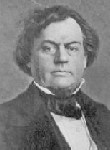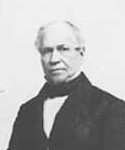Book Review: A Fierce Glory
17 October 2018
A Fierce Glory: Antietam – the Desperate Battle that Saved Lincoln and Doomed Slavery (Da Capo Press, September 2018) by Justin Martin.  Hardcover; 250 pages main text, 315 total; 3 basic maps, 36 photos, endnotes, index. ISBN: 978-0-306-82525-5 (hardcover), 978-0-306-82526-3 (e-book). $28.00
In A Fierce Glory Justin Martin has written a personal and approachable book about the great and terrible battle of Antietam. His narrative style is breezy and conversational, quite different from the usual voice on this subject, but with it he successfully interprets some important political and military themes for a general-reader audience.
This book is an excellent choice for anyone looking for an introduction to the battle of Antietam or for American Civil War history more generally. It offers a good way to learn about the battle itself and, perhaps more important, indelibly links the battle to its most enduring legacy, the Emancipation Proclamation. Those looking for a detailed tactical study of the battle should choose another volume.
In this new book Justin explores Antietam from two viewpoints, nearly simultaneously.
In the first, he shows the battle and its aftermath as it was experienced by the participants at Sharpsburg – by the civilians, soldiers, and generals who were there. He examines the opposing commanding officers Robert E. Lee and George B. McClellan in some detail, delving into McClellan’s Democratic politics and healthy ego, and highlighting Lee’s family, military reputation, and slaveholding history. He paints a fair picture of both men, I think, tending away from the extremes of criticism or praise that they often get.
Then, in alternating sections, he takes us to Washington DC to see the private and political lives of Abraham Lincoln: from personal tragedy at the death of his son, Willie, in February 1862, through the crushing daily responsibilities of the Presidency, to his writing and issuing the Proclamation. Justin has a high opinion of Lincoln, and makes a good case that Lincoln’s wording and timing of the Proclamation made it a political masterstroke.
This dual-view approach – alternating the perspective between the battlefield and Washington – results in a story of the battle of Antietam which successfully connects large social and political issues like patriotism and slavery with the lives, actions and sacrifices of the battle participants.
On the military side, Justin has distilled the mass of available information down to a few key points, which will make the story accessible to readers who haven’t spent years studying military history. He does a nice job covering the major phases of the battle in the Cornfield, West Woods, Sunken Lane, and Burnside Bridge, again, in 21st century conversational style. He brings in eyewitness quotes and biographical details for dozens of soldiers and officers to hint at what it must have been like to be in combat at Antietam, but he doesn’t go deeply into the troop movements or other tactical detail. Of course, there are several good books already available for that.




[Toombs, Barton, Letterman, Slade]
He spotlights other personalities beyond Lincoln, Lee, and McClellan, as well. These include Brigadier General Robert Toombs of Georgia, who was once a viable candidate for President of the Confederacy, and Clara Barton and Dr. Jonathan Letterman, pioneers of military medicine and care of the wounded at Antietam. He also introduced me to a man I had not previously met: William Slade, an African-American valet, messenger, and usher at the White House. Slade was apparently also a sounding board for the President as he drafted the Emancipation Proclamation.
Justin uses endnotes (rather than footnotes) to show his sources, particularly for direct quotes. These worked well for me in the main though I found some minor gaps, which are not critical in a book of this type. His references are a mix of primary and secondary sources, many of the former written by the participants themselves. There is an index, but no bibliography. In his Acknowledgments, Justin notes that he got some of his perspective on the battle in person, from Antietam Guides on the field and from other experts at sites in Washington, Arlington, and Sharpsburg. Overall, I found his book to be true to the historical record as I know it.
I recommend this book as a new and different take on the Battle of Antietam. As an old guy and long-time Antietam researcher, used to 19th century documents, I was initially distracted by Justin’s very casual writing style, word choices, and phrasing. But I soon got into his rhythm and found I really enjoyed the book when I took it as a story on its own, rather than as a reference or research source, which is how I usually read books.
_____________
Thanks to Matt Weston at Da Capo Press/Hachette Book Group for contacting me about the book and sending a copy for my use (on 19 September). The book was complimentary, but no strings were attached and I get no compensation for the review.
See the book’s page with links to online retailers on the publisher’s site or, hopefully, find the book in a store near you.
Justin Martin is on Twitter (@JustinMartinNYCÂ )
The beautiful book cover is from an Alexander Gardner photograph [Library of Congress] of Lincoln with Allan Pinkerton and Major General John McClernand at Sharpsburg on 3 October 1862. Color by Marina Amaral.
For more online, see the author’s Q&A with blogger John Banks.



Please Leave a Reply